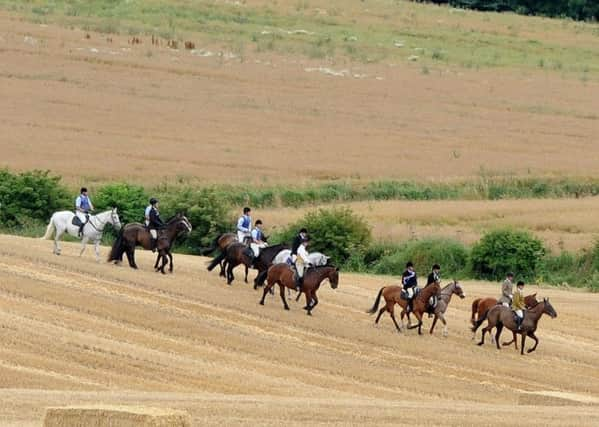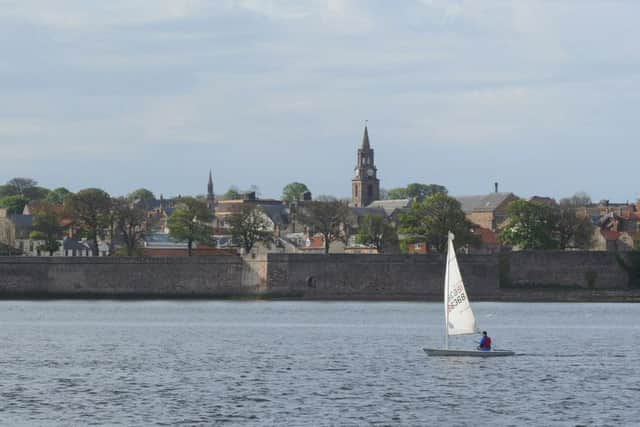The long and terrifying reign of the Border Reivers


Just the size of Wales, it is a crossroads of cultures.
It was an exciting visit. There was effectively a curfew. I was warned not to leave my lodgings after 8pm.


Georgia had just gained independence and an extreme group, the so-called Mikhedrioni, had become something of a scourge. People spoke of them with a mixture of awe and terror.
Advertisement
Hide AdAdvertisement
Hide AdMaybe this was the feeling in the borders of Scotland and England between the 13th and 17th centuries. For the Border Reivers were not unlike the Georgian Mikhedrioni. They were equally unconcerned about who their victims might be.
The Reivers, then, were from both English and Scottish families. They were effectively ‘cattle rustlers’, operating in various family gangs.
The 16th century marked the high-water mark of their terrifying reign in the borders.


The family names have lived on – some of them straddle the borders still on both Eastern and Western marches.
Advertisement
Hide AdAdvertisement
Hide AdThe Armstrongs, the Thomsons, the Grahams and the Robsons are cross-border names.
More than 100 names still figure in the names of shops and businesses in Southern Scotland and Northern England: Rutherford, Turnbull, Ridley, Douglas, Collingwood, Hume and the Percys.
Of course, not all members of these families were Reivers, but one can see how indigenous were the names, the energies and the ruthlessness of the Reivers.
In some ways one should not be surprised at this ‘pirate culture’. After all, England and Scotland were at war from the late Middle Ages onwards.
Advertisement
Hide AdAdvertisement
Hide AdEven a cursory brush with history unearths Robert the Bruce and Bannockburn, or Edward I, builder of Berwick’s first defensive walls and known as the Hammer of the Scots.
Berwick changed hands three or four times and it was as late as 1482, under Henry VII, the first Tudor King, that it conclusively became the northernmost town in England.
However, even one century later, Elizabeth I spent more money on rebuilding Berwick’s walls – more than on any other single piece of military infrastructure during her long reign.
So these parts were, indeed, wild country – badlands, fertile for aggressive pillaging and thieving.
Advertisement
Hide AdAdvertisement
Hide AdAll this further made tenuous the rule of law from kings and queens, whether North or South of the border.
Indeed governments happily exploited the energies of these warlike border ‘clans’ as it fostered instability – the Reivers acted as a provisional line of defence.
In his excellent monograph on the Reivers, Alistair Moffat conveys the mixture of terror and excitement of these warlike communities.
Elements of this spill over, of course, into the highly romantic novels of Sir Walter Scott. Indeed, an earlier Walter Scott was leader of one of the families of these land-based corsairs.
Advertisement
Hide AdAdvertisement
Hide AdMoffat describes Scott’s raid on Bewcastle. The Reivers’ ‘raids’ instilled terror into their innocent victims.
Moffat’s swashbuckling description of the Bewcastle raid notes: “The leading raiders were skittering down to the burn, and breaking his silence, Scott roared for support to come up to him on the ridge.
“The cows splashed over the burn, riders whacking them on…. The Armstrongs had broken cover.
“Four Bewcastle men were immediately shot out of the saddle. Many others were badly wounded and the troop routed before their captain had time to rally them to him.”
Advertisement
Hide AdAdvertisement
Hide AdThe atmosphere conjured up that of Alfred Noyes’ Highwayman in that famous adventure poem, or the similar tales of smugglers in Meade Falkner’s Moonfleet and Daphne du Maurier’s Cornwall.
But the Reivers were far more organised and menacing.
They were forerunners of gang warfare still prevailing now. Indeed, they were noted as the ‘finest light cavalry’ of the European continent.
There was a constant feeling of insecurity in the border country.
Travelling now in North Northumberland it’s hard to imagine how Salter’s Road at Alnham, or the valley roads into Alwinton in the upper Coquet valley – former ‘drovers’ roads’ – were among the most dangerous routes in the borders, prime targets for raiders from either of the two frequently warlike kingdoms.
Advertisement
Hide AdAdvertisement
Hide AdEffectively, one by-product of the union of the crowns under James VI of Scotland when he became James I of England was to bring law and order to this wild and untamed countryside.
The 17th century saw the ending of ‘reiving’, as it had been known.
Still, there is a powerful inheritance from these reiving times. Walter Scott romanticised the history, adding spice and imagination. He also popularised the minstrelsy begotten of the reiving centuries, from victims and perpetrators alike.
But one of the most attractive legacies, perhaps, of these lawless times is the surviving annual diary of common ridings. These 16 or so ‘ridings’ derive from the appointment of a townsperson to lead out groups to protect the law abiding and innocent, either in times of war, or more frequently when the Reivers were a doughty threat.
Advertisement
Hide AdAdvertisement
Hide AdWatching the activities of Coldstream’s Civic Week and the Coldstreamer leading a group to Flodden to hear the annual oration is but one peaceful, yet exciting way of capturing this unique, warlike history.
• A book featuring a collection of Stephen Platten’s Borderlands series from the Berwick Advertiser is now available at Grieves’ Stationers and Slightly Foxed books in Berwick. Borderlands: Exploring Northumberland and the Tweed is priced at £6.95, published by Wanney Books.